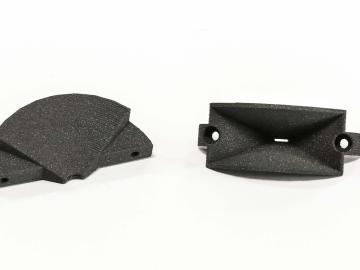
Filter News
Area of Research
- (-) Advanced Manufacturing (22)
- (-) Isotope Development and Production (1)
- (-) Materials for Computing (11)
- (-) Neutron Science (33)
- Biological Systems (1)
- Biology and Environment (47)
- Building Technologies (2)
- Computational Biology (2)
- Computational Engineering (3)
- Computer Science (15)
- Electricity and Smart Grid (3)
- Energy Science (145)
- Functional Materials for Energy (1)
- Fusion and Fission (7)
- Fusion Energy (3)
- Isotopes (28)
- Materials (57)
- Mathematics (1)
- National Security (35)
- Nuclear Science and Technology (15)
- Quantum information Science (6)
- Sensors and Controls (1)
- Supercomputing (108)
News Topics
- (-) 3-D Printing/Advanced Manufacturing (30)
- (-) Biomedical (16)
- (-) Computer Science (19)
- (-) Cybersecurity (2)
- (-) Isotopes (1)
- (-) Space Exploration (5)
- Advanced Reactors (2)
- Artificial Intelligence (7)
- Big Data (2)
- Bioenergy (9)
- Biology (8)
- Biotechnology (1)
- Chemical Sciences (7)
- Clean Water (2)
- Composites (5)
- Coronavirus (13)
- Energy Storage (10)
- Environment (9)
- Fossil Energy (1)
- Frontier (1)
- Fusion (2)
- High-Performance Computing (2)
- Hydropower (1)
- Irradiation (1)
- Machine Learning (4)
- Materials (28)
- Materials Science (40)
- Mathematics (1)
- Microscopy (7)
- Nanotechnology (17)
- National Security (3)
- Neutron Science (122)
- Nuclear Energy (6)
- Physics (9)
- Polymers (7)
- Quantum Computing (1)
- Quantum Science (9)
- Security (2)
- Simulation (1)
- Summit (6)
- Transportation (9)
Media Contacts

Scientists have found new, unexpected behaviors when SARS-CoV-2 – the virus that causes COVID-19 – encounters drugs known as inhibitors, which bind to certain components of the virus and block its ability to reproduce.

Oak Ridge National Laboratory researchers combined additive manufacturing with conventional compression molding to produce high-performance thermoplastic composites reinforced with short carbon fibers.

Researchers at the Department of Energy’s Oak Ridge National Laboratory and the University of Tennessee are automating the search for new materials to advance solar energy technologies.

A team of Oak Ridge National Laboratory researchers demonstrated that an additively manufactured hot stamping die – a tool used to create car body components – cooled faster than those produced by conventional manufacturing methods.

Oak Ridge National Laboratory researchers have demonstrated that a new class of superalloys made of cobalt and nickel remains crack-free and defect-resistant in extreme heat, making them conducive for use in metal-based 3D printing applications.

Collaborators at Oak Ridge National Laboratory and the University of Tennessee Health Science Center are developing a breath-sampling whistle that could make COVID-19 screening easy to do at home.

The ExOne Company, the global leader in industrial sand and metal 3D printers using binder jetting technology, announced it has reached a commercial license agreement with Oak Ridge National Laboratory to 3D print parts in aluminum-infiltrated boron carbide.

Six ORNL scientists have been elected as fellows to the American Association for the Advancement of Science, or AAAS.

To better understand how the novel coronavirus behaves and how it can be stopped, scientists have completed a three-dimensional map that reveals the location of every atom in an enzyme molecule critical to SARS-CoV-2 reproduction.

Scientists at Oak Ridge National Laboratory and the University of Tennessee designed and demonstrated a method to make carbon-based materials that can be used as electrodes compatible with a specific semiconductor circuitry.


